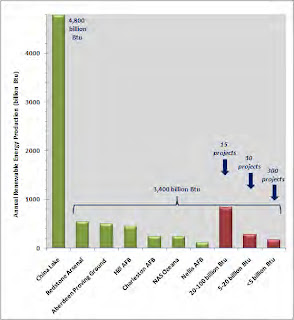Picking winners in energy technology competition instead of leaving the decision to the marketplace is not something a free market would dictate. But this is the trend now.
Recent examples shave shown that biofuels, solar and wind could be the handpicked losers. President Obama talks about introducing tax credits for renewable energy developers. The problem is spending billions of taxpayers money to push premature and uneconomic programs. Range Fuels Inc.’s cellulosic ethanol plant in Soperton, Ga, sacked more than $300 million in taxpayer and private money before closing. Another $500 million taxpayer money lost on the Solyndra corporation (see for details at Solyndra Businessweek Solyndra Scientific American , Solyndra what happened).
In Wired, Julie Eilperin writes that clean-technology investment is going bust in the US. Sam Fletcher sums it up quite elegantly: “I wish I could understand how a government guarantee of a $535 million loan to a financially troubled solar-panel manufacturer was "an investment in the future," while taking from oil and gas companies the same tax provisions enjoyed by other businesses is a gutsy move to curb "subsidies." Government financing was supposed to create 4,000 "green" jobs. Instead, the firm went bankrupt, laid off employees, and let taxpayers pick up the bill.”
A recent World Bank Policy Research Working Paper concludes that solar technologies still not economically competitive for electricity generation. It says that despite a large drop in costs, improved technological performance and higher fossil-fuel prices, solar-energy technologies still aren't competitive with conventional ones for electricity production. Many countries have implemented a range of direct and indirect subsidies, as well as regulatory standards, to boost the production of solar energy. But the incentives provided by these measures aren't enough to substantially increase solar energy's share in the global electricity-supply mix. Maintaining policy supports can be costly and inefficient.
And yet, the DOD doesn’t get tired of awarding new contracts. The White Sands Missile Range project in New Mexico, awarded in December 2011, will provide the Army with 4.44-megawatts of installed photovoltaic capacity. When finished, it will be the largest renewable energy project in the Army, more than double the size of the current largest 2-megawatt array at Fort Carson, Colo. The $16.8 million contract with Siemens Government Technologies will generate more than 10 percent of the installation's electrical energy consumption via solar renewable energy by the end of 2012. (Army's largest renewable energy project part of $61 million energy contracts)
DOD’s Strategic Sustainability Performance Plan FY 2011 tells us that of all electricity consumed by DoD facilities in FY 2010, 9.6% was obtained from renewable sources of energy. At the end of FY2010 close to 350 renewable energy projects were hosted on DoD properties. But a handful of them contribute the lion’s share of the Department’s total renewable energy production. The geothermal facility at China Lake in California accounts for over 58% of DoD’s total renewable energy generation. The next six largest sources of renewable energy account for over a quarter of DoD’s renewable energy. All of the remaining 345 projects generate much less energy than these, usually much less.
Output of the Seven Largest DoD Renewable Energy Projects Compared to the Other 345
I wonder how this chart would look like in terms of total costs. My point is that DOD should present these kinds of charts in a context, by using some metrics, like cost per MW installed, or kWh cost etc.
Nellis Air Force Base's 14.2-megawatt solar power plant has been lauded by the military as a showpiece of a sweeping effort to boost energy security and resilience at bases by integrating renewable energy. But the solar panels at Nellis are useless when commercial power is out, thanks to a provision in the project's agreement with the local utility that lets NV Energy turn off the array if the grid goes down. Utilities charge a "disconnect fee" for the right to drop off the grid and continue generation during a power outage.
This is also the case for the Naval Air Weapons Station in China Lake, Calif., where a 270-megawatt geothermal plant produces more power than it uses, and many others. The idea of using renewable energy to power critical missions wasn't on the Pentagon agenda when the Nellis and China Lake projects were built in 2007 and 1987, respectively. But today, as the DOD undertakes a massive effort to build renewable energy generation for "energy security," there is still no overarching requirement that such power sources be able to support vital national missions if the local power goes out.
Consider this scenario: The commercial grid is down, so the base is running its cogeneration plant and photovoltaics at full tilt. Then, clouds pass, and suddenly power is gone. DOD energy officials say renewable power can be an important piece of a base's overall power portfolio, but there are limits to how much of the load it can shoulder.
So if you cannot get electricity from these green power generations if the commercial grid goes down, then what is their role in providing security benefit to the military? Labels: solar



2 Comments:
Visited your web site. Like lots of people you are full of comments, info, and critical with no real solutions. Like your critisims (this is just a quibble)your own web site says, "view my complete profile" which is just a repeat of your summary.
This is why you should try out home units. Just saying.
Post a Comment
<< Home